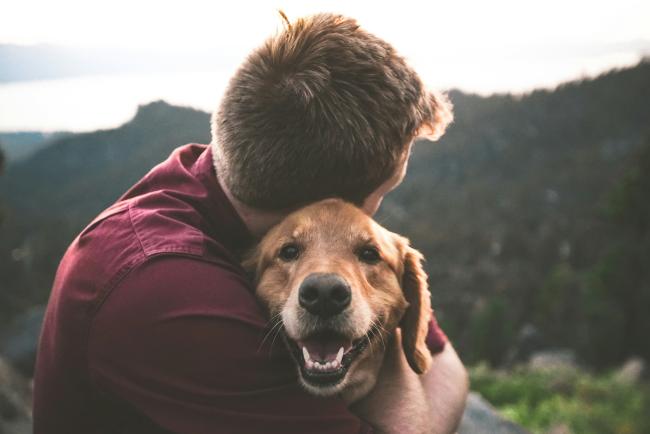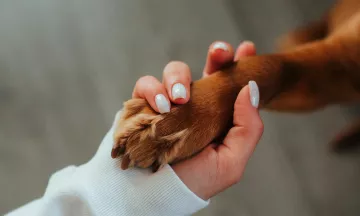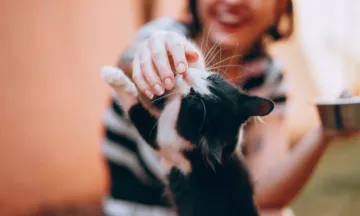Understanding Fireworks Anxiety in Dogs
Before diving into specific actions, it’s essential to understand why fireworks can be so distressing for dogs. The loud, unpredictable noises and bright flashes of light can trigger their fight-or-flight response. This in turn leads to behaviours such as trembling, barking, hiding, or even attempting to escape.
Dogs have far more sensitive hearing than humans, so what might seem like a minor disturbance to us can be overwhelming for them. Your goal as a pet sitter is to mitigate this stress and provide a safe, comforting environment.
1. Keep the Dog Inside
Why it Matters:
The first step in ensuring the dog’s safety is to keep them indoors. Outside they are exposed to full force of the fireworks, without any dampening. This may cause the dog may panic and/or run away.
- Secure the House: Upon arrival, do a quick check to make sure all doors, windows, and gates are securely closed and locked. This prevents the dog from escaping if they become startled.
- Create a Comfortable Space: Designate a specific area in the house where the dog can feel safe. This might be a cozy corner with their bed, blankets, and favourite toys. If possible, choose a room away from windows and doors where the sound and light from fireworks are less likely to penetrate.
- Use White Noise: Turn on the TV, a fan, or play calming music at a low volume. This background noise can help muffle the sound of fireworks and create a more soothing atmosphere.

2. Ensuring a Safe Environment
Why it Matters:
Even the most well-behaved dogs might attempt to escape if they are frightened. Ensuring the home is secure will prevent any accidental runaways and pet safety.
How to Implement:
- Double-Check Entrances: Make sure all entrances to the home are secure. Pay special attention to doors and gates that might not close properly.
- Secure Curtains and Blinds: Draw all curtains or blinds to block out the bright flashes of fireworks. This not only reduces the visual stimuli but also helps muffle the sound slightly.
- Remove Potential Hazards: Walk through the house and remove any items that could be dangerous if the dog panics. This includes small objects they could swallow, or anything breakable that could cause injury.
3. Recognising and Responding to Signs of Anxiety
Why it Matters:
Understanding the dog’s body language will allow you to respond appropriately to their anxiety. Dogs show stress in different ways. Spotting these signs early can help you manage their anxiety before it worsens.
How to Implement:
- Observe Behaviour: Look for common signs of anxiety, such as panting, pacing, trembling, whining, or trying to hide. Some dogs may become clingy, seeking comfort from you, while others might try to isolate themselves.
- Reassure: If the dog seeks out your company, provide gentle reassurance. Pet them calmly, speak in a soothing tone, and avoid making sudden movements or loud noises.
- Respect Their Space: If the dog prefers to hide or be alone, respect their choice. Forcing interaction can sometimes increase their stress. Make sure they have a quiet, safe space where they can retreat.

4. Pre-Firework Playtime
Why it Matters:
Exercising the dog during the day can help reduce anxiety later on. A tired dog is generally a calmer dog, as they have less pent-up energy to channel into stress.
How to Implement:
- Physical Activity: If possible, take the dog for a long walk or engage them in a play session earlier in the day. Activities like fetch, tug-of-war, or agility exercises can be both physically and mentally stimulating.
- Mental Stimulation: Alongside physical exercise, consider activities that stimulate the dog’s mind. Puzzle toys, scent games, or training sessions are excellent ways to tire them out mentally.
- Timing: Ensure that the exercise session is well before the fireworks are expected to start. This way, the dog has time to unwind and relax afterward.
5. Providing a Safe Hiding Place
Why it Matters:
Dogs naturally seek out safe, enclosed spaces when they are scared. Providing a designated hiding place can give them a sense of control and security during the fireworks.
How to Implement:
- Preferred Spots: Observe where the dog tends to go when they are anxious. Common hiding spots include under beds, behind furniture, or in a closet.
- Enhance the Space: Make the hiding spot as comfortable as possible. Add extra blankets, a few favourite toys, and perhaps a piece of clothing with the owner’s scent to help the dog feel more secure.
- Do not Disturb: Once the dog has settled into their hiding spot, do not disturb them unless absolutely necessary. Allow them to stay there as long as they feel comfortable.
6. Microchip and Paperwork
Why it Matters:
If the dog gets lost, having current ID is important so your and the owner can quickly reunite with them. You should ideally do this at the Meet & Greet.

7. Being a Source of Comfort
Why it Matters:
Dogs are highly perceptive to human emotions. Staying calm and composed yourself can have a calming effect on the dog you are caring for.
How to Implement:
- Body Language: Maintain a relaxed posture and avoid any sudden movements that might startle the dog.
- Speak Softly: Use a soothing, gentle tone when speaking to the dog. Avoid raising your voice, even if the dog becomes agitated.
- Stay Patient: Remember, it’s natural for dogs to be frightened by fireworks. Be patient and give the dog time to settle
As a sitter, your role in keeping a guest dog safe and calm during fireworks can be challenging. By taking the time to understand what makes your furry guests anxious and by using the tips in this guide, you will ensure a stress-free service.
Would you like to become a Pawshake sitter?





